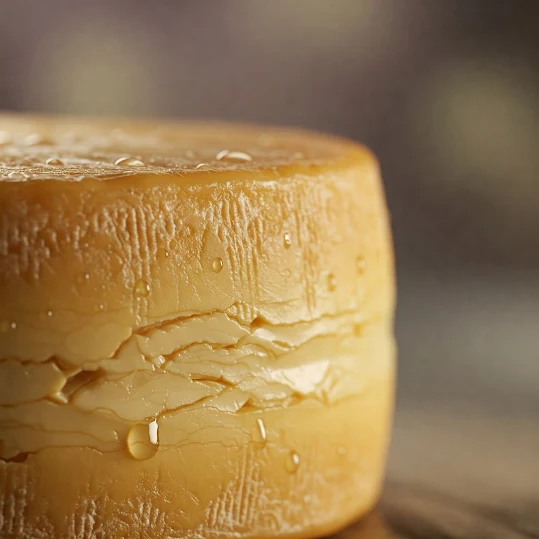Cheese is one of the world’s oldest and most beloved foods, celebrated for its astonishing diversity of flavors, textures, and aromas. From the sharp tang of aged Cheddar to the creamy mildness of Brie, cheese flavors are as varied as the cultures that create them. But what exactly gives cheese its unique flavor, and how do different varieties develop their distinctive tastes? Let’s explore the fascinating world of cheese flavors, the factors that influence them, and some classic examples from around the globe.
What Influences Cheese Flavor?
The flavor of cheese is shaped by a complex interplay of ingredients, processes, and time. Here are the primary factors:
1. Milk Type
The source of the milk-cow, goat, sheep, or even buffalo-greatly influences the flavor. Cow’s milk tends to be mild and creamy, goat’s milk is tangy and earthy, while sheep’s milk is rich and nutty. The animals’ diet and the region’s terroir also contribute subtle notes.
2. Starter Cultures and Microbes
Cheese making begins with the addition of starter cultures-specific bacteria that ferment lactose into lactic acid. These bacteria, along with molds and yeasts introduced later, break down proteins and fats, creating a range of flavor compounds. For example, the blue veins in Roquefort are the result of Penicillium roqueforti mold, which imparts a sharp, tangy flavor.
3. Coagulation and Curd Handling
The method used to coagulate the milk (enzymes like rennet or acids) and how the curds are cut, cooked, and pressed influence moisture content and texture, which in turn affect flavor intensity. Softer cheeses often have milder flavors, while harder, aged cheeses develop more robust profiles.
4. Aging (Affinage)
Aging is perhaps the most critical factor in flavor development. As cheese matures, enzymes and microbes continue to break down proteins and fats, producing complex flavors and aromas. Young cheeses are usually mild and milky, while aged cheeses can be sharp, nutty, earthy, or even spicy.
5. Additives and Treatments
Some cheeses are flavored with herbs, spices, smoke, or even wine. Others are washed in brine, beer, or spirits, which can impart unique flavors and encourage the growth of specific bacteria on the rind.
The Flavor Spectrum: Types of Cheese and Their Tastes
Let’s take a tour through some popular cheese categories and their characteristic flavors:
Fresh Cheeses
Examples: Ricotta, Mozzarella, Feta, Cottage Cheese
Flavor: Fresh cheeses are typically mild, creamy, and slightly tangy. They are high in moisture and have not been aged, so their flavors are delicate and milky.
Soft-Ripened Cheeses
Examples: Brie, Camembert
Flavor: These cheeses have a bloomy rind and a soft, creamy interior. The flavor is buttery, mushroomy, and sometimes slightly earthy, especially as they age.
Semi-Soft and Washed-Rind Cheeses
Examples: Havarti, Munster, Taleggio
Flavor: Semi-soft cheeses can range from mild and buttery to strong and pungent. Washed-rind varieties develop orange rinds and bold, savory, sometimes funky flavors due to regular washing with brine or alcohol.
Hard Cheeses
Examples: Cheddar, Gruyère, Parmesan, Manchego
Flavor: Hard cheeses are often aged for months or years, leading to concentrated flavors. Cheddar can be sharp and tangy, Gruyère is nutty and slightly sweet, Parmesan is savory and crystalline, and Manchego is buttery with a hint of grassiness.
Blue Cheeses
Examples: Roquefort, Gorgonzola, Stilton
Flavor: Blue cheeses are known for their assertive, tangy, and sometimes spicy flavors. The blue veins provide a sharp, salty, and earthy taste that can be an acquired preference.
Flavored and Specialty Cheeses
Examples: Herb-coated goat cheese, smoked Gouda, truffle-infused cheese
Flavor: These cheeses incorporate herbs, spices, smoke, or other flavorings, resulting in unique and sometimes bold taste experiences.
Pairing Cheese Flavors
Cheese flavors can be enhanced or balanced by pairing with complementary foods and drinks. Sweet fruits, nuts, honey, and jams can offset strong or salty cheeses, while wines and beers can bring out hidden notes. For example, blue cheese pairs beautifully with sweet dessert wines, while sharp Cheddar is excellent with crisp apples or a hoppy beer.
Conclusion
Cheese flavors are a celebration of nature, tradition, and craftsmanship. Whether you prefer the subtle sweetness of fresh mozzarella or the bold punch of Roquefort, there’s a cheese flavor for every palate. Exploring the world of cheese is a delicious journey-one that rewards curiosity and adventurous taste buds. So, next time you enjoy a slice, take a moment to savor the complex flavors and the story behind every bite.





Social Media